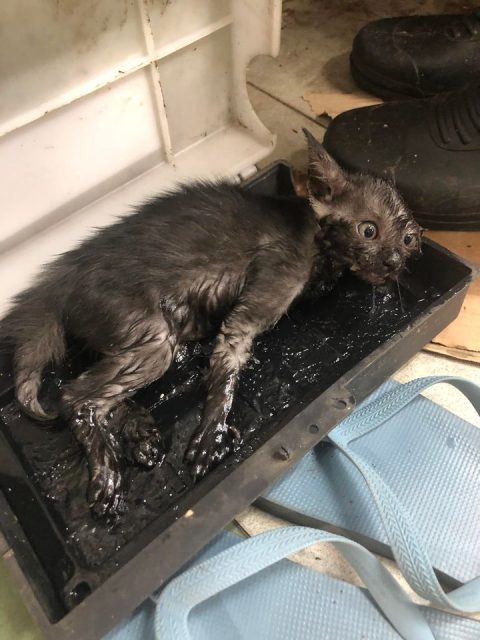The Facebook user said, “rats infestation issue at this market is a ongoing problem, one rat scurried past as we were attending to the kitten.”
A Facebook user Grace Chai shared a video of a kitten stuck in a glue trap that was meant for rats at a wet market at Tampines Street 81. She said that she found the kitten being exhausted it it tried to free itself from the trap for hours.
Chai said that the cat was eventually rescued by the Society for the Prevention of Cruelty to Animals (SPCA), and was attended to by a vet. The kitten was put on antibiotics and will be vaccinated in two weeks, after which it will be put up for adoption.
According to Chai the market at Tampines Street 81, the place where she found the glue-trapped kitten, has a perennial rats infestation problem. She added that a rat scurried past her as she was attending to the kitten.
SPCA has in the previous years, appealed to AVA to institute a ban of glue-board traps because of the suffering caused to animals that are trapped on them, not only rats, but other species.
Glue traps are usually placed indoors for rodent control and pests caught on these boards are thrown away with the traps, leaving the trapped animal to suffer for days, subjected to starvation and dehydration. Animals with their faces stuck in the glue will slowly suffocate. In order to escape the trap, some animals will chew off their own limbs.
In 2019, there were several reports that community cats in the Redhill area were getting hurt by glue traps. This happened after a minimart in that area engaged a pest control company to help resolve the rats issue there. The minimart manager then said that she had to put up with the rat infestation for over two years. She said the glue traps have helped with the minimart’s pest issues and there have been days where up to three rats were caught in the traps.
The Agri-Food and Veterinary Authority of Singapore (AVA) responded at that time saying, “Glue traps are common and effective tools used worldwide to trap rodents, whose population needs to be controlled for hygiene and public health reasons.”
AVA said a set of guidelines on responsible use of glue traps had been developed by the agency, in consultation with the pest control industry and the National Environment Agency (NEA), to safeguard animal welfare and minimise the trapping of non-target animals. These were the guidelines used by most vector control operators, it said.
AVA cautioned that glue traps should not be used in open areas where other animals might get trapped. “If a glue trap is used in an open area, there must be good justification to do so and an appropriate cover must be used over the glue trap to prevent a non-target animal from being trapped,” AVA said.
It said that other animals caught on the trap must be released from the trap unharmed and have the glue removed from its body with cooking or baby oil. It also advised for the hurt animal to be sent to a veterinarian for attention if necessary.

